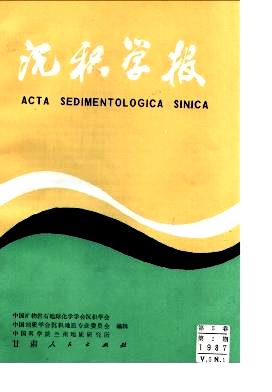MICROSTRUCTURE AND ACCUMULATIONAL CHARACTER AND DOWNWARD ENRICHMENT OF THE BAUXITE DEPOSITS IN XIUWEN COUNTY, GUIZHOU PROVINCE
- Received Date: 1985-02-09
- Publish Date: 1987-03-10
Abstract: The composition and microstructure of the bauxite deposits from Xiuwen County, Guizhou Province have been studied with JSM-35C scanning electron microscope and PV-9100 X-ray energy dispersive analyzer. The body of bauxite deposits in Xiuwen is in layered or lenticular structure with different size. The occurrence is gently. The bauxite bed is in median of congenial. Upper and lower parts of the bauxite bed are bauxitic clay in grey and compact texture, and downward, there is hematiteshale. The bauxitic clay and compact bauxite, oolitic bauxite soil bauxite and their transitional types are mainly dealt with in this paper. The bauxitic clay under bauxite bed is grey and compact. Its main component is kaolinite and the crystal is mainly scaly. From its microstructure, the kaolinite, seen under electro-micro-scope, is authigenic mineral in syngenetic stage of epicontinental sea sedimentation. In bauxite layer, there are compact bauxite, soil bauxite, oolitic bauxite and their transitional types. In their components, the diaspore is dominated, and the following are: beohmite, kaolinite, micagroup mineral and several kinds of terrigenous clastic sediments. According to the abrasion of the sediments, it is considered that the accumulation in bauxite layer is connected with the remove of the terrigenous sediments in a suort distance. The potassium is more high in compact bauxite. The crystal grain which contains some heavy metals, such as gold, silver and copper or several kinds of elements, has been found, the author considers that it is the result of absorption during sedimentation. The existence of the gold chloride proves that the bauxite bed may have undergone the process of high temperature or high pressure. In the inner part and matrix of the oolitic bauxite, the major component is diaspore, the minor components are kaolinite, mica-group mineral, a few boehmite and some of terrigenous clastic sediments. Several cross-sections of ooide and bean have been observed carefuly. Generally, there are four layers from core to outside. The main component in the core is kaolinite. In the component of the second and third layers, the diaspore is dominated. But the microstructure in the second and third layers is different. In the forth layer, the main component is kaolinite, its crystallinity is fine, but absorption is obvious and impure elements are varied. Most of soil bauxite are soft and their tenor is in high grade. They contain a lot of columnar pseudohexagonal crystal with complete shape and uniform size. In their microstructure, the character of secondary enrichment is obvious. There are many secondary holes in some of soil bauxite. The shapes and microstructures of these holes are varied. Most of holes are filled with complete macrocrystalline diaspore. In some of these holes, typical crystals of diaspore and gibbsite exist together. In a few holes, the indications of transform from clay to bauxite are obvious. The characters mentioned above indicate that the concentration of the bauxite is connected with leaching and downward enrichmcent.
| Citation: | Yang Guanqun. MICROSTRUCTURE AND ACCUMULATIONAL CHARACTER AND DOWNWARD ENRICHMENT OF THE BAUXITE DEPOSITS IN XIUWEN COUNTY, GUIZHOU PROVINCE[J]. Acta Sedimentologica Sinica, 1987, 5(1): 69-76. |






 DownLoad:
DownLoad: